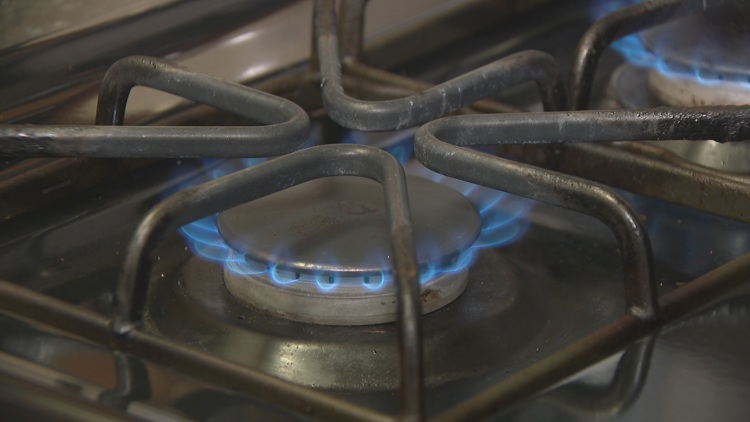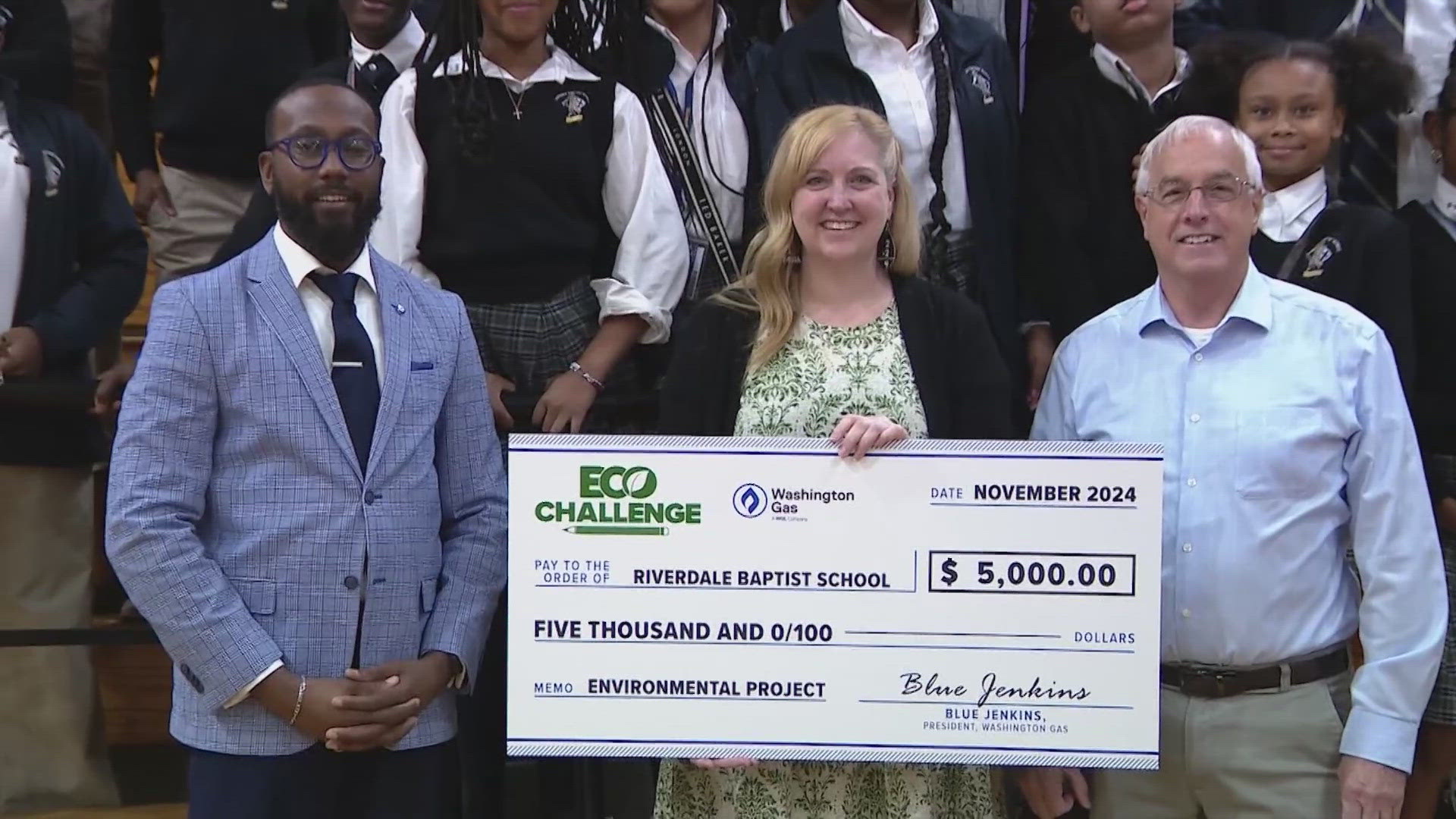WASHINGTON — Editor's Note: This story, originally published on Nov. 21, has been updated to include additional research and sources regarding the safety of gas stoves.
As families prepare for Thanksgiving feasts, a new report highlights a potential health hazard in the kitchen: gas stoves and ovens.
A report by the Beyond Gas Coalition claims that 63% of kitchens tested in Montgomery County exceeded the Environmental Protection Agency’s (EPA) health standard for nitrogen dioxide (NO2) levels.
In D.C., 77% of homes surpassed the safe limit, with some kitchens recording pollution levels up to four times higher than the EPA’s one-hour outdoor standard, according to the report's authors.
Beyond Gas Coalition was invited into at least 663 homes to conduct air quality tests and compiled two years of data into its report, Cooking Up Danger: Community Study Reveals Hazardous Nitrogen Dioxide Levels in DC and Maryland Kitchens. The advocacy group measured NO2 levels after 30 minutes of gas stove use. Levels often remained elevated for hours, even in rooms far from the kitchen. Low-income households, where ventilation is often limited, faced the highest risks, the authors say.
The EPA has set health standards for indoor emissions from gas appliances. Numerous studies link the emissions to adverse health effects, particularly in children.
Gas appliances likely cause at least 50,000 cases of current pediatric asthma from long-term NO2 exposure, according to a 2024 study led by researchers at Stanford University.
"Short-term NO2 exposure from typical gas stove use frequently exceeds both World Health Organization and U.S. Environmental Protection Agency benchmarks," the Stanford researchers found.
Even so, gas appliances can play an important role in reducing health hazards in poor countries where people rely on dirtier fuels such as wood and kerosene, according to a report funded by the World Health Organization published in the Journal Lancet.
"Although gas fuel use was associated with a slightly higher risk for some health outcomes compared with electricity, gas is an important transitional option for health in countries where access to reliable electricity supply for cooking or heating is not feasible in the near term," the authors reported.
Washington Gas, the only gas utility provider in D.C. and many surrounding counties, encourages customers to make informed choices.
"Washington Gas encourages its customers to follow the safety guidelines provided by their appliance manufacturers (i.e., use a vent hood or exhaust fan while cooking)," said Andre Francis, Senior Director of Utilities Communications for Washington Gas in a written statement to WUSA9. "Additionally, customers should keep appliances well-maintained and serviced regularly to ensure they are functioning efficiently and safely," Francis said.
Barbara Briggs, a lead author of the Beyond Gas Coalition report, described the local findings as alarming.
“I’m horrified by these numbers, especially with Thanksgiving coming up," Briggs said. "Millions of families will be cooking for hours, exposing themselves to pollution levels that are unsafe even for short periods."
Sidra Siddiqui, of the Washington Interfaith Network which collaborated with Beyond Gas on collecting data in home visits, emphasized the health risks.
“Children, older adults and people with pre-existing conditions are most vulnerable to the harmful effects of NO2. Public housing residents and those in poorly ventilated homes face even greater risks," Siddiqui said.
Research links gas stoves to a 42% higher risk of asthma symptoms in children. Nationwide, they are attributed to 12.7% of childhood asthma cases. Stanford University research also reveals that gas stoves emit benzene, a carcinogen, even when turned off.
Briggs is calling for action to reduce indoor air pollution including:
- Switch to electric appliances: Residents are encouraged to adopt electric or induction stoves to minimize pollution.
- Ventilation improvements: Use range hoods and open windows when cooking.
- Incentive programs: Expand rebate programs to help residents transition to electric appliances.
- Policy measures: Local governments should ban gas appliances in new construction, a step already taken in D.C. and Montgomery County, despite ongoing legal challenges from the gas and homebuilding industries.
Briggs, who said she has personally switched to an electric induction cooktop, advocates for broader systemic changes.
“We need to prioritize healthier communities by providing financial assistance and resources for families to move away from gas," she said.
According to the Beyond Gas report, low-income and minority households face disproportionate exposure to indoor air pollution. In D.C.’s Ward 8, children are 10 times more likely to require hospitalization for asthma than those in wealthier areas.
The gas industry has pushed back against these findings, filing federal lawsuits to challenge pending bans on gas appliance installations in D.C. and Montgomery County.
“This legal action is necessary to protect the right of customers to choose the affordable, reliable energy sources that meet their needs and budget," said the National Association of Homebuilders in a statement.
The Healthy Homes Act, passed in D.C. this year, provides funding to help low-income residents transition to electric appliances. Advocates hope to build on this progress by implementing policies that phase out gas appliances in homes and public buildings.
For more information, visit Beyond Gas DC, Sierra Club DC Chapter, and EPA Indoor Air Quality Resources.



